Overview
Our sharpening service will provide a good serviceable edge on the blade. The result is typically “very sharp” with a small secondary bevel and a bit of an “apple seed” profile. The resulting edge is somewhat dependent on the particular blade. Some blades will take and hold sharper edges than others and the thickness of the blade will determine how wide the bevel will need to be. We adjust the angle of the edge to suit the specific blade and attempt to get as close to a bevel-less edge as possible without marring the surface of the blade.
The Sharpening Process
The sharpening service is done with a belt sander. The process involves many passes with sanding belts of various grits. The blades are rested between passes to prevent them from becoming hot and damaging their temper. By default we will sharpen as much of the blade as possible including any false edges if appropriate. If you have a different preference, feel free to make that request in the special instructions at check out. We can sharpen only the last half or third of an edge, for example. Our sword sharpening expert has personally sharpened several thousand swords at this point, so will provide you with a professional service.
What the Service is Not
The resulting edge will be “sword sharp” not razor sharp. Our goal is to provide you with a usable edge for cutting practice that will hold up to some use and not require constant re-sharpening. In other words, we intend to provide you with a serviceable weapon, not a personal grooming implement. The service will not provide a completely bevel-less edge. To create that type of edge will necessarily scratch up the blade surface and we lack the machinery and time to provide a full re-polishing of a blade’s surface. A service of that nature would be significantly more expensive as a great deal more time would be required. We do not offer this type of service at this time.
Disclaimer
We make no guarantee that the resulting edge will meet with your expectations. Every blade is different and some will take and hold a sharper edge than others, due to the blade material, heat treatment or geometry. Some customers can also have incorrect assumptions about sword sharpness and improper expectations as a result. All we can say for sure is that the resulting edge will be sharper than the default edge, in most cases, significantly so. We can not provide any refunds for the service once it has been completed, so consider it to be provided “as is”. That being said, if you are unhappy with the product for any reason, we do still allow you to return the item for a full refund, including the sharpening costs under our normal return policy. This does not apply to special sharpening requests, for example if we sharpen something specially for you that does not normally list that option on our site. The vast majority of our customers are happy with the results of the service, so as long as you keep the above mentioned in mind, we are confident you will be pleased with the results as well.


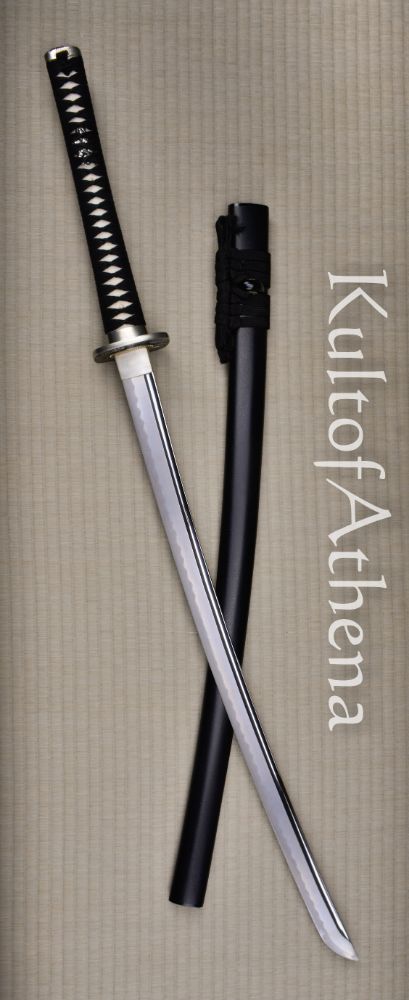


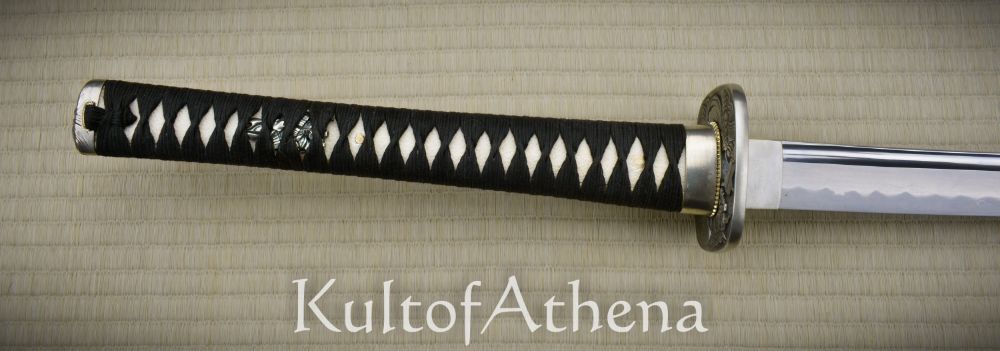
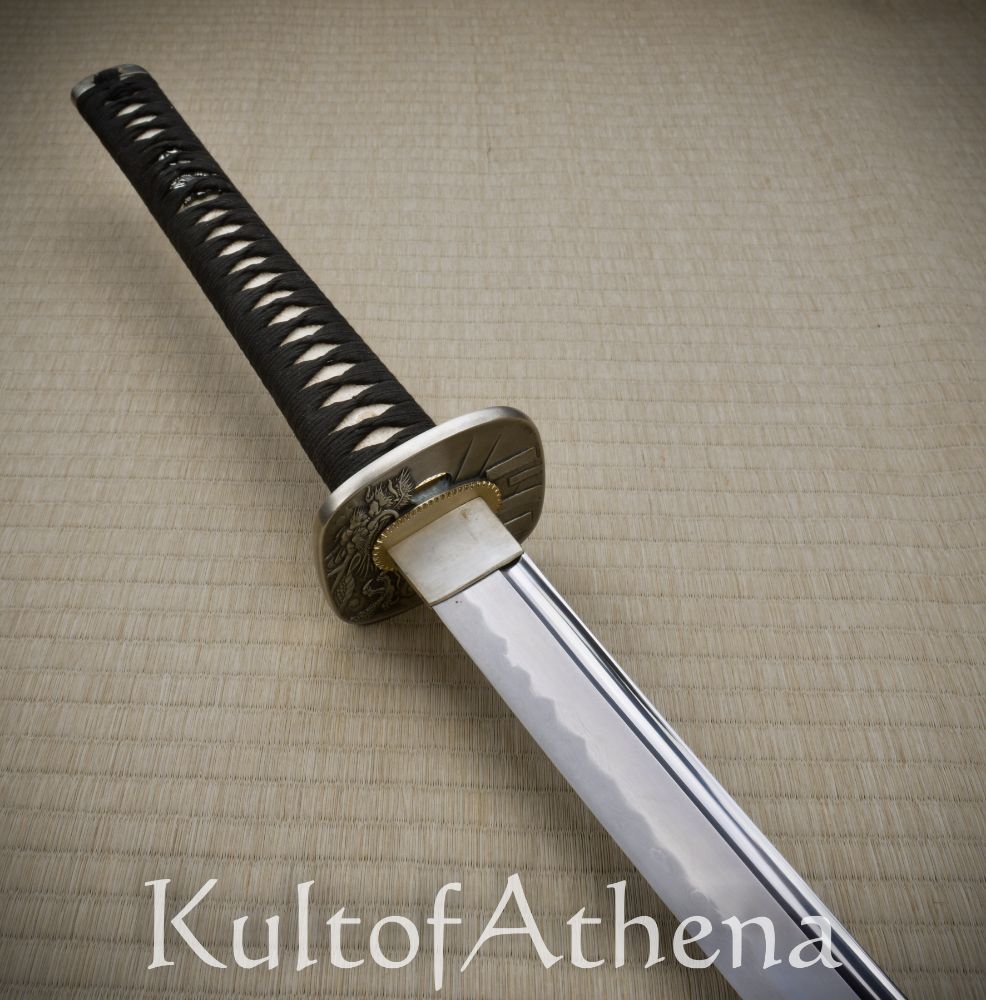
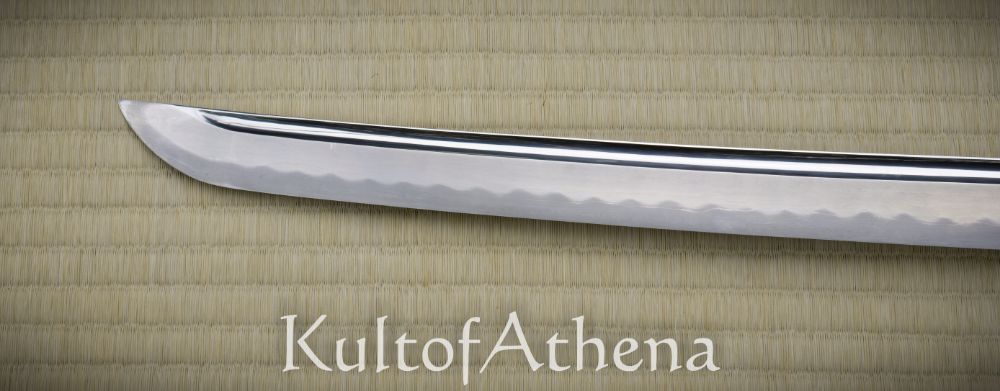
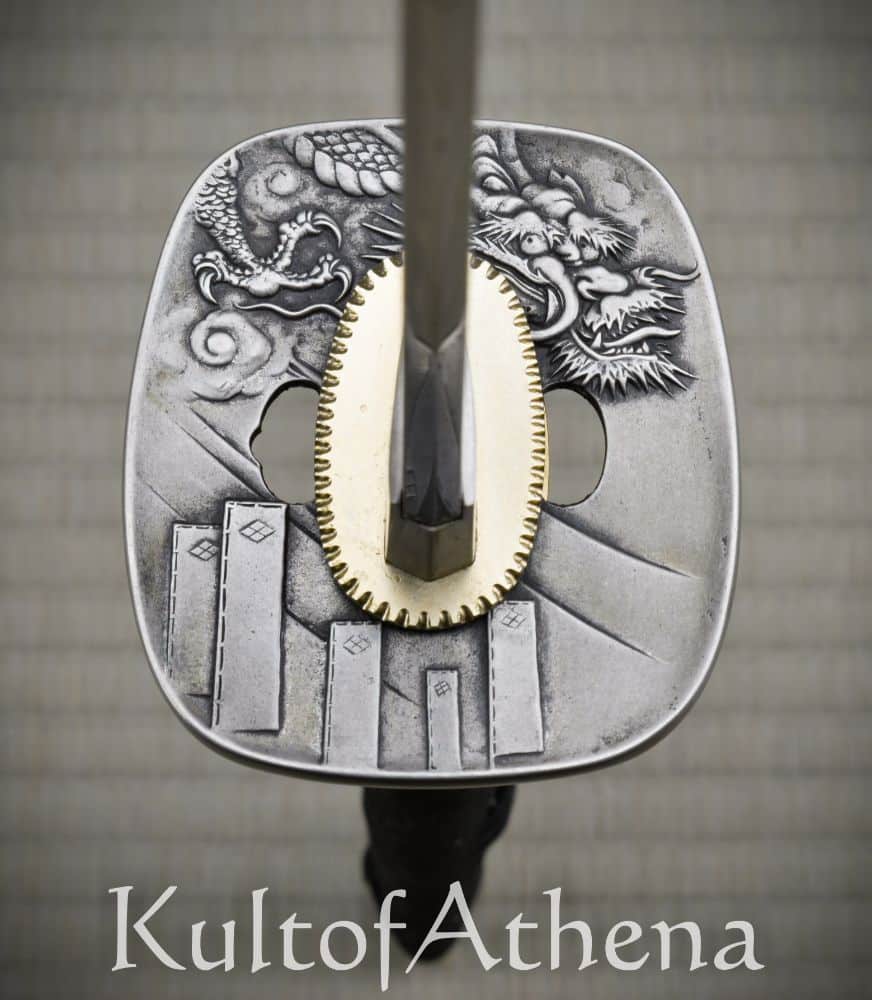
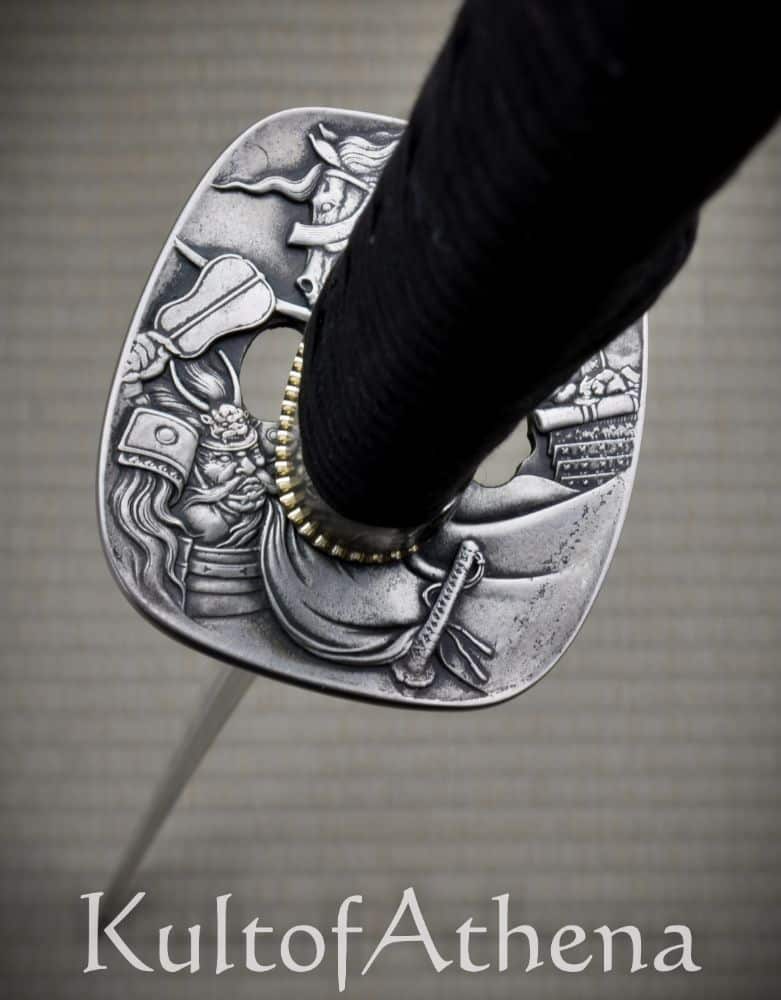
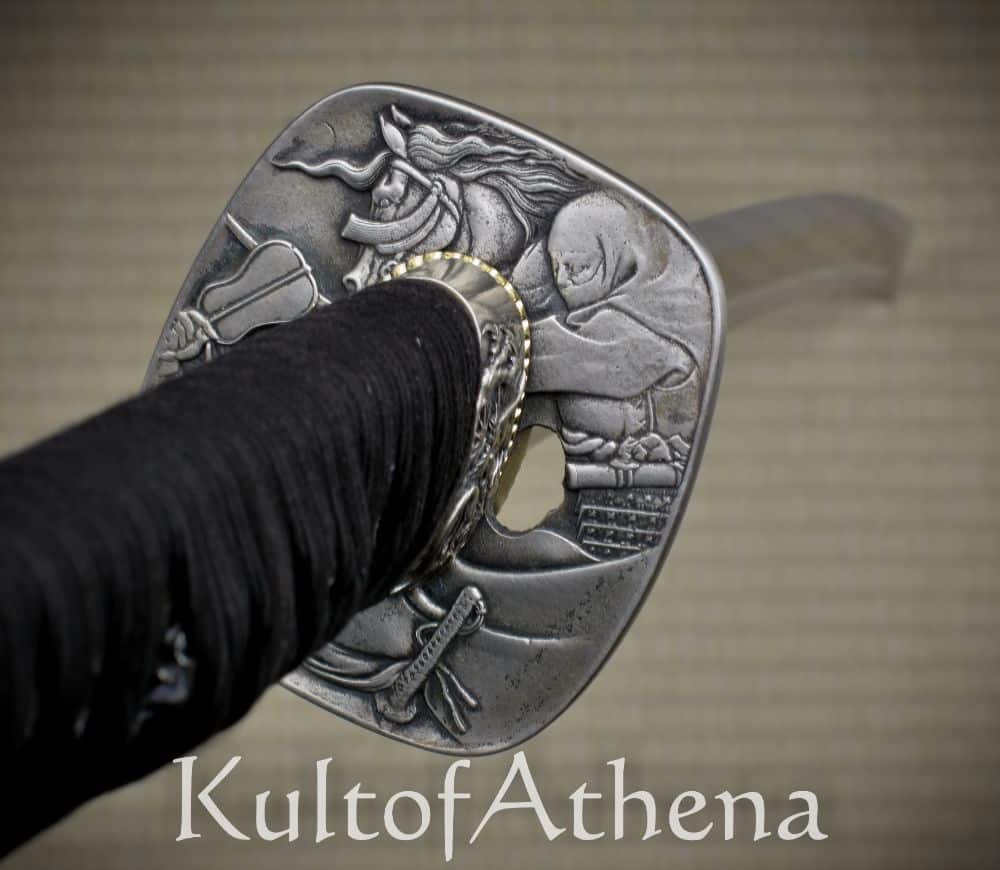
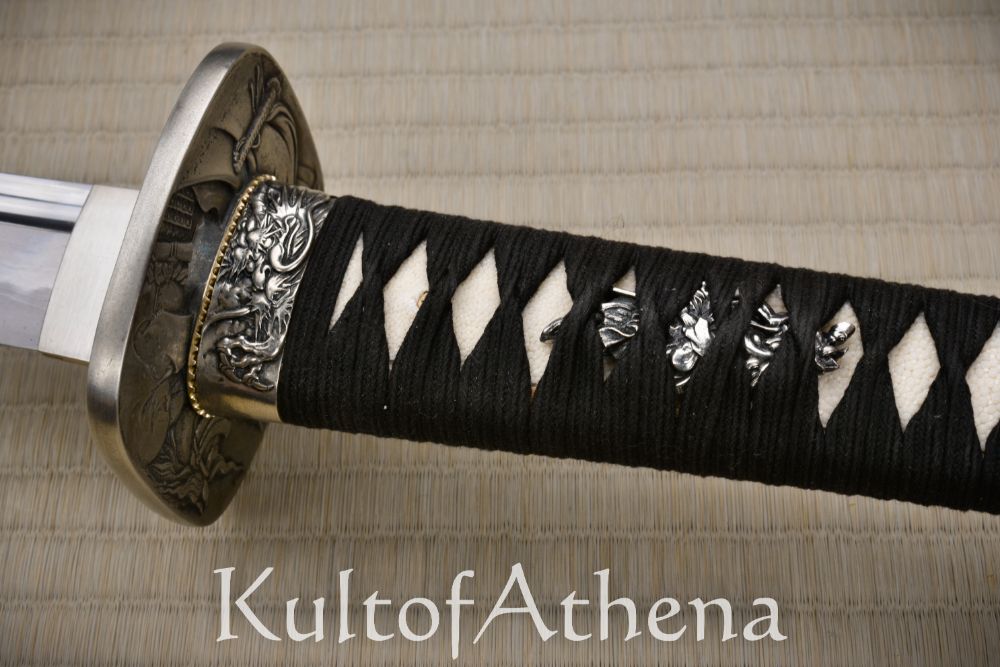
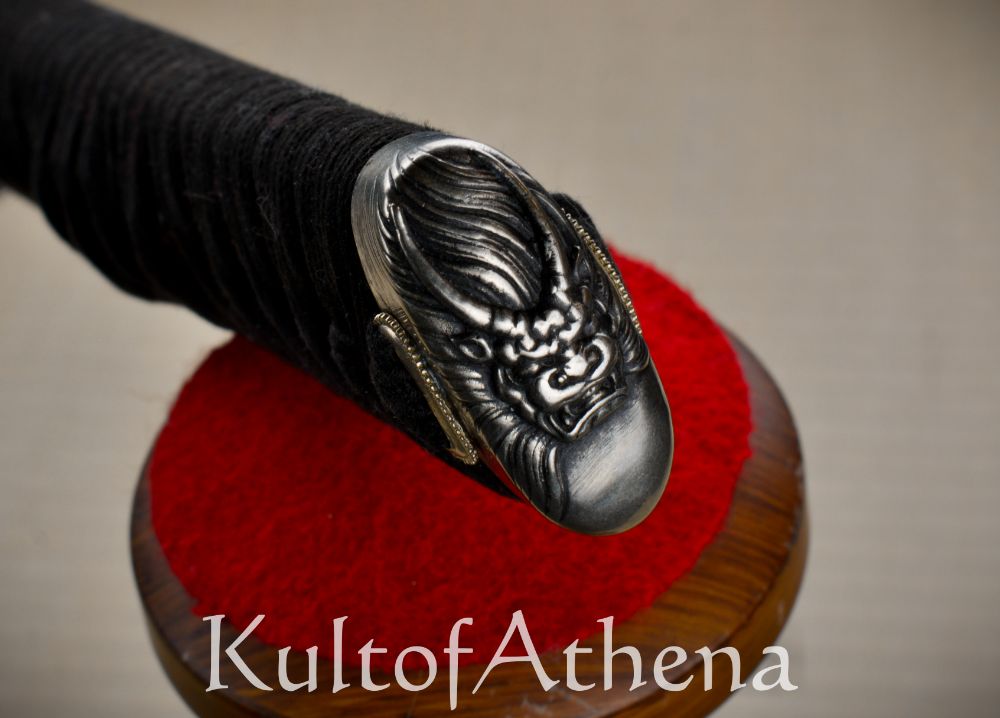
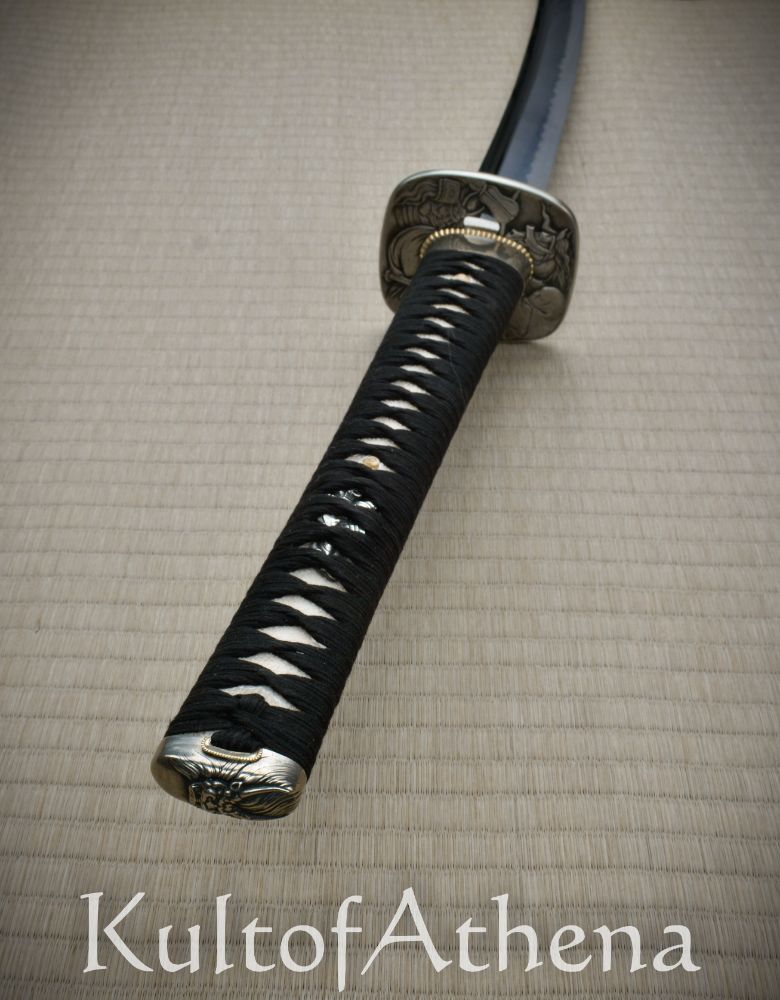


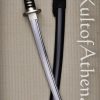
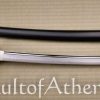
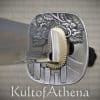
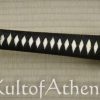
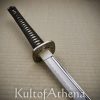
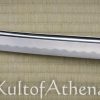
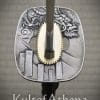

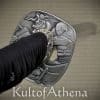
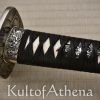
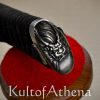
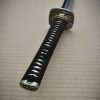
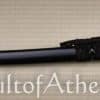
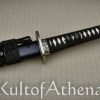
Kelley Norwoood (verified owner) –
Firstly, a note.
I am submitting this review voluntarily. I purchased this sword of my own free agency, with my own money, and I am not beholden to anyone to give any flowery, exuberant, or bullsh*t review. I ordered this sword on Monday, received it on Thursday, and was used to cut tameshigiri in the dojo today. This is why it pays to be an Acolyte of the Kult. I cannot thank the good folks of KOA enough! I have done business with y’all for almost 2 decades and I’ve never EVER been disappointed. If you need it from Kult of Athena in a hurry, don’t hesitate to ask.
On to the sword.
The stock tsuka on this sword is ridiculous. It’s HUGE at the fuchi making wrapping the fingers all the way around virtually impossible for all but the most gargantuan of hands. The samegawa is in the upper rage of low-quality panels typically adheased to the cores of mass-produced swords. The ito is really good quality and tightly woven in the appropriate alternating overlapping hinerimaki style. The folds of the ito had really good quality paper hishigami inside them. I think the sageo is nylon or some other synthetic fiber. The habaki, o-seppa, fuchi, kashira, kashira shitodome, kurigata shitodome, menuki, and tsuba are all top-quality cast and silvered, I think brass, but it’s definitely heavy solid metal (no crappy ‘alloy’). The detail on them is OUTSTANDING quality. The menuki and tsuba, particularly, had such well-rendered details that I found them to be absolute works of art. The saya is nothing special, it’s very wide in the koiguchi to accommodate the wider blade, but otherwise it’s a passable attempt at kuroishime finish, looks almost like lineolum wrapped around the outside. I believe the koiguchi, kurikata, and kojiri are real water buffalo horn. There isn’t much play in the saya. It probably isn’t carved to fit the blade, but I got lucky and the koiguchi is tight on the habaki and the sword doesn’t rattle.
All that said about the fittings, none of the negatives bother me in the least. I never use a stock production sword. I always disassemble these swords and build a new tsuka and wrap my own tsukaito. I bought this sword for the blade, and if you ask me, I got one hellova one-sided good deal. This katana cuts right out of the box like it’s a lightsaber. It’s very broad and has pretty decent niku, in both cases I’d say it’s larger than the Hanwei Performance Geometry Cutting swords. The bohi really lightens things up and keeps the sword responsive; it is well-defined and terminates in a shinken point (not the rounded off terminal that you see on most katanas with bohi). While the sword is BIG, it’s not out of proportion. The finish is pretty good. Not mirror polished, but I find that level of polishing to be detrimental to frequent tameshigiri use. Good shinogi, mune, yokote, and shapely chukissaki. The hamon is prominent and one can see the hada of the T-10/9260 alloy along the shinogiji. I agree with what I read elsewhere online about this particular metallurgical choice for Dragon King. It would have made more sense for them to do a sanmai/shoshukite lamination of those metals, but having them folded together still produces an amazing result. After looking ant every facet of this sword with a magnifying glass, I found no pitting or lamination problems anywhere. The nakago is really wide, as well, also very much akin to the Practical XL and Practical Plus XL type swords, so making a new handle from scratch is a must (stock tsukas off e-bay or amazon or wherever aren’t going to fit right). The nakago sits a bit off-center from the nagasa, much like how a handle doesn’t align with the blade on a chef’s knife.
And finally, how does it drive?
My first cut was a kessagiri so clean that there was no drag in the cut and the portion of the goza that I had just cut through fell to earth ONLY because of gravity. I was successful with every cut in both full kihonwaza and in cutting from only 6 inches off the surface of the goza. My next-to-last cut had shaved the goza down to the level of the mounting dowel, and thinking I still had clearance, with my last cut, accidentally sliced right into it. I didn’t cut through it, and was afraid I had rolled the edge, but I withdrew the sword to discover NO dulling, chipping, rolling, or any visible effect to the edge. WOW! Hitting a dowel can be the final curtain call for cheaper swords.
These are just my opinions on this sword based on my experience. I have about 18-19 years training in nihontojutsu and have handled, cut, and trained with lots of different swords over the years. I wouldn’t recommend getting this sword if you plan to use it for any kind of martial arts training and DON’T plan to build a new tsuka for it. For the price, the tsuka is REALLY disappointing. I think that Dragon King could have executed this design better, but I can’t complain about the results from using it. It’s ALMOST cheating at tameshigiri. :)
Kitamori Takeshi
Shin Shin Ryu Iaijutsu
Shinmeikan Dojo
Houston, TX
09-16-2023